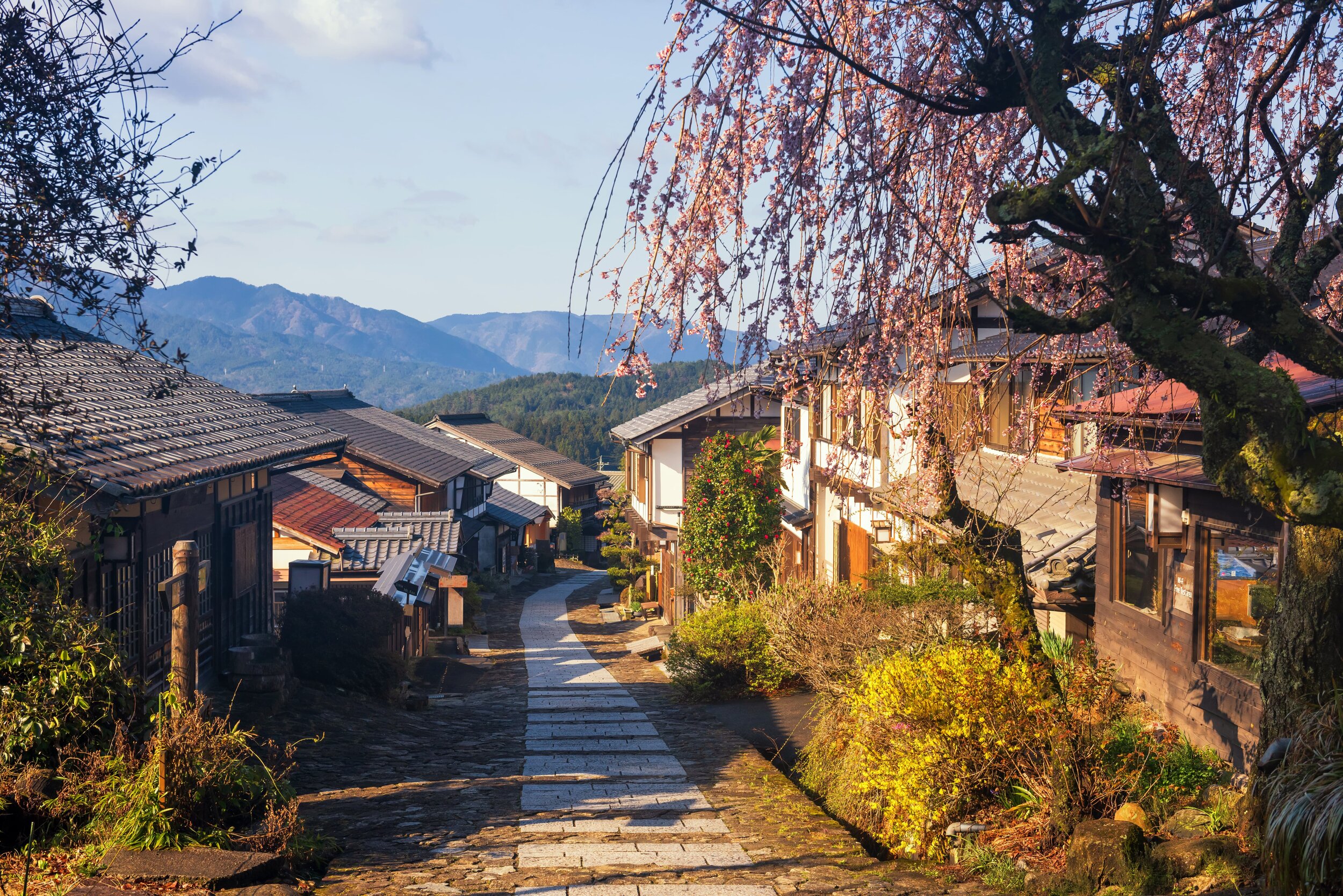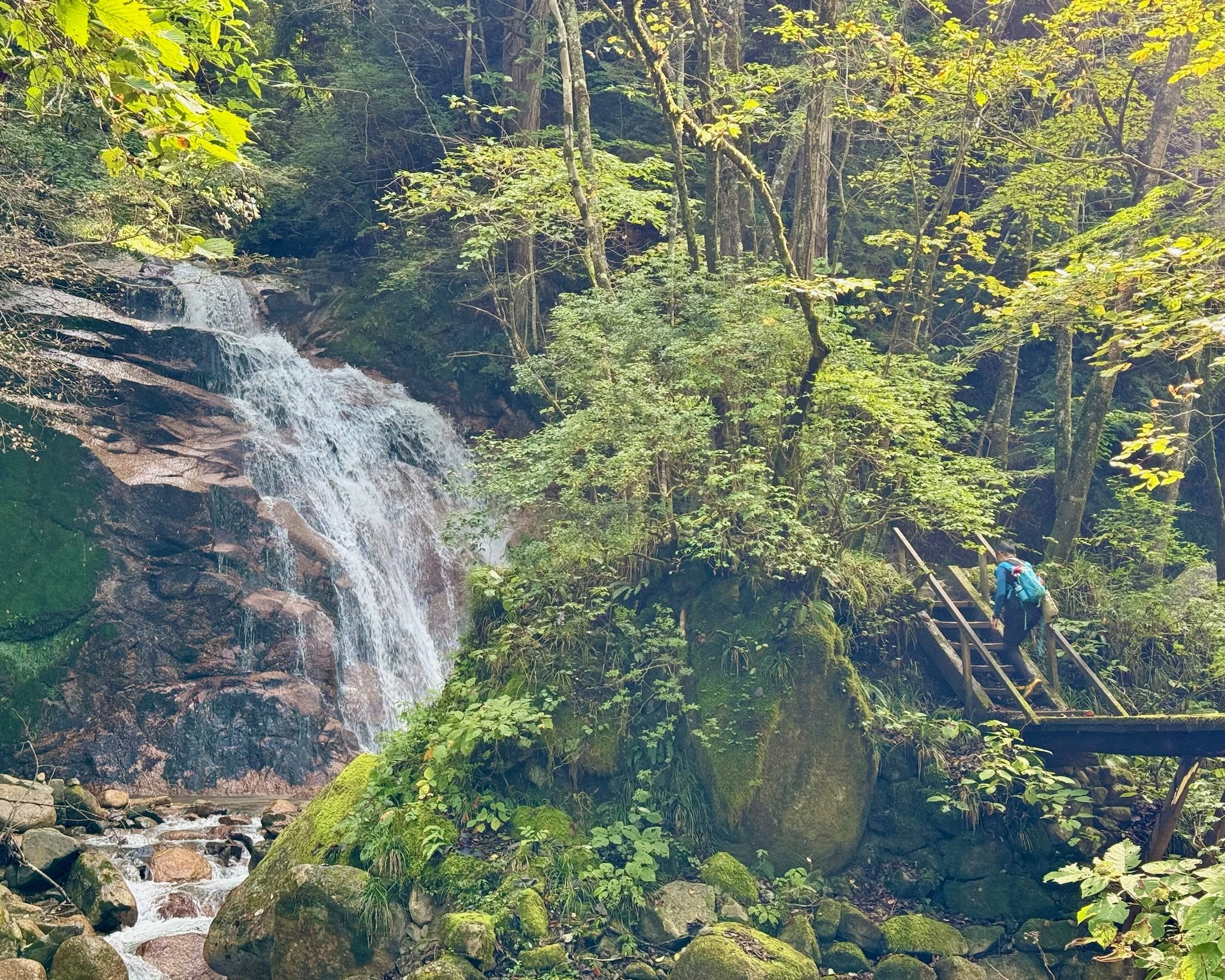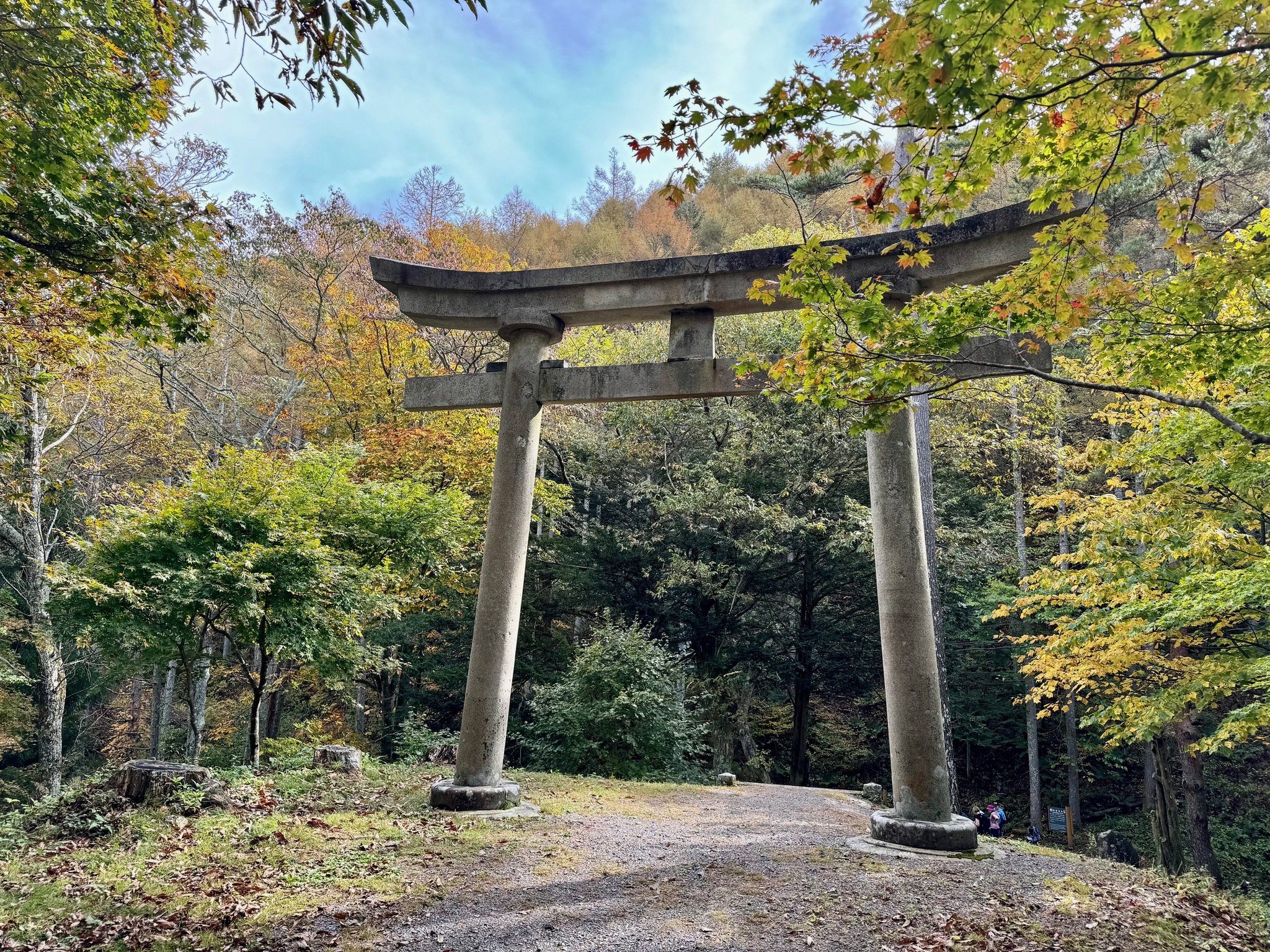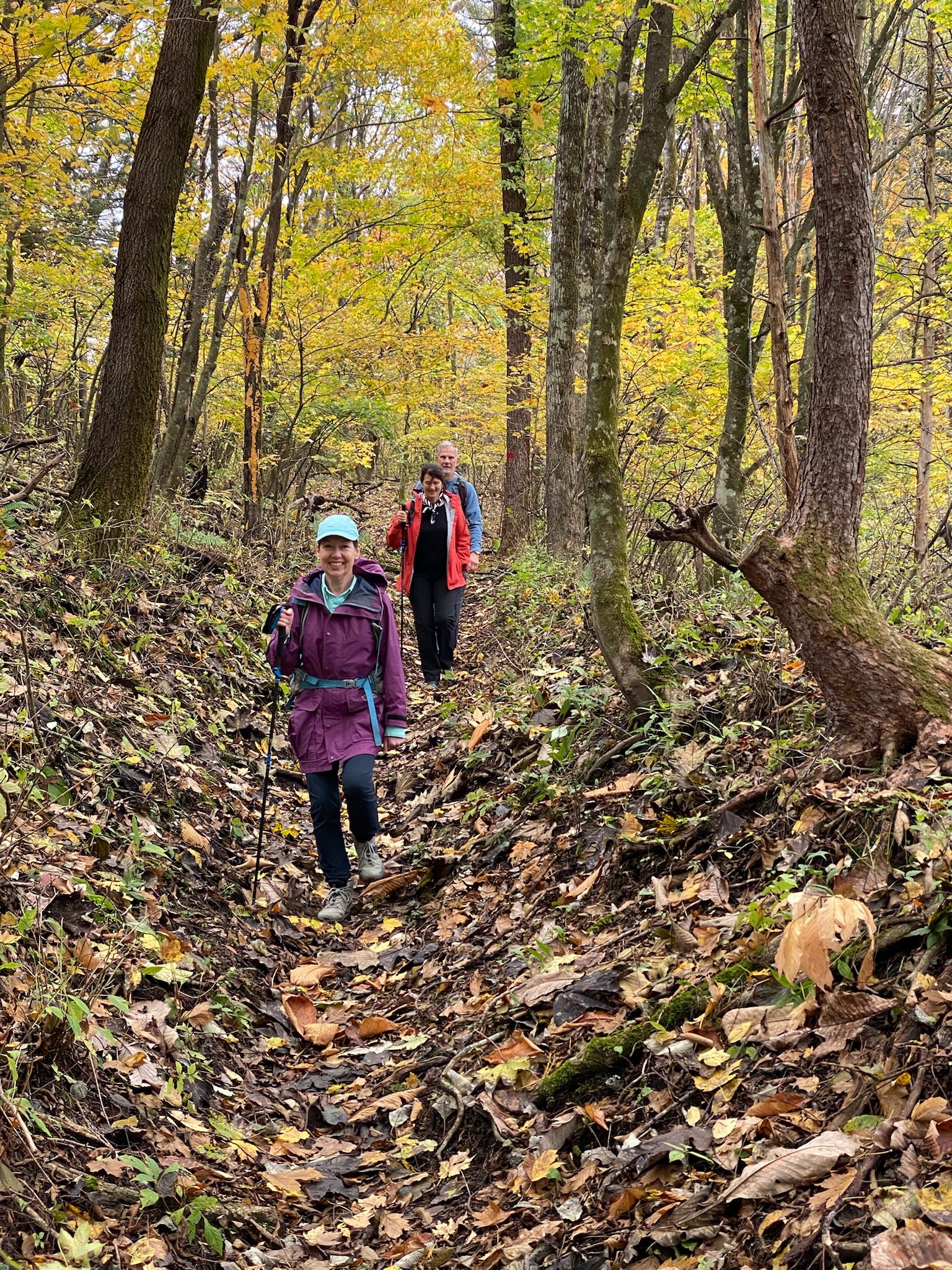Nakasendo Way
Highlights:
Picturesque Kiso Valley
Traditional well preserved villages
Stunning forests and mountains
Historic shrines and temples
Brief:
⏱ Duration: 5 - 12 Days
🗺 Distance: 52 - 135 km
⛰ Grade: Moderate
🗓 Best Time: March-June/Sep-Nov
🛏 Accomm: Inns/Ryokans
Walk Overview
The Nakasendo Way is a long distance pathway linking the cities of Tokyo and Kyoto. It is an ancient thoroughfare traditionally followed by feudal lords, samurai soldiers, merchant travellers and pilgrims during the renowned Edo period of Japanese history. The entire trail covers 330 miles (534 km) and passes through 69 “post-towns” which were traditional resting places where travellers could find food and accommodation as they walked between Kyoto and Edo (now Tokyo).
Given the extreme length of the trail and the developed areas between the major cities of Tokyo and Kyoto, tour operators offer various versions of the Nakasendo Way. Some Nakasendo Way walking holidays include components of sightseeing in Tokyo and Kyoto as well as incorporating elements of train and bus travel, covering a period of between 10 - 11 days. Other tours concentrate more on the rural walking highlights of the Nakasendo Way and offer a shortened version of the walk usually involving 5 days of walking.
The Nakasendo Way provides a unique opportunity to explore rural Japan, in particular the remote and scenic Kiso Valley. This rural section of the path allows the walker to become totally immersed in the surrounding alpine landscape featuring tranquil forests and stunning mountains. Many of the villages en-route are very well preserved and evocative of the Edo period. There are 11 “post-towns” along the Kiso Valley. Accommodation is provided at traditional ryokan inns and minshuku guesthouses where delicious local cuisine is on offer.
Assistance and further information:
For assistance in walking all or part of the Nakasendo Way, click the button below:
For information on other walks in Japan, click the button below:
A five day itinerary for the Nakasendo Way is shown below. Many different options are possible on the Nakasendo Way, with walk operators offering trips between 5 and 12 days in length.
Itinerary
A five day itinerary is shown below.
Day 1
Magome to Tsumago
Distance: 8 km
Time: 3 hours
Accommodation: Minshuku Guesthouse
Day 2
Tsumago to Nojiri
Distance: 18 km
Time: 6 hours
Accommodation: Onsen Ryokan
Day 3
Yabuhara to Narai
Distance: 6 km
Time: 3 hours
Accommodation: Minshuku Guesthouse
Day 4
Narai to Kiso Hirasawa, optional visit to Matsumoto Castle
Distance: 3 km
Time: 1 hour
Accommodation: Ryokan
Day 5
Karuizawa to Yokokawa
Distance: 17 km
Time: 6 hours
Accommodation: Onward travel
Walk Options
Guided
Several tour operators offer various versions of the Nakasendo Way as a guided trip.
Some tours start in Tokyo, whilst other tours start in Kyoto. Accommodation options include hotels (en-suite bathrooms), Japanese style inns and guesthouses. The traditional style accommodation such as ryokan and minshuku provide futon bedding, tatami mat flooring and shared bathrooms.
Typically, the package offered by these operators include:
11/12 Day tour with professional english speaking guide
10/11 Nights accommodation
All breakfasts and dinners
Transfers between tour locations, as set out in the itinerary
Entrance fees to museums, shrines and temples, as per the itinerary
Luggage transfers (although the extent of this varies between tour operators)
Assisted self-guided
Several tour operators offer self-guided trips on the Nakasendo Way. Typically, the service includes:
Track notes, maps, daily itinerary and information pack
Accommodation. En-suites are not generally available at traditional inns.
Transfers including train tickets for journeys between track locations
Breakfasts and dinners
Telephone support from local English speaking area manager
Some tour operators include train tickets to the start of the walk and from the end of the walk
The duration of the self-guided options vary depending upon how many days you wish to spend on the Nakasendo Way.
Independent
There is a range of traditional inns and guesthouses in the villages along the route offering accommodation and local cuisine. Some have private onsen hot spring facilities.
Essential Information
Access
The closest airport is the Osaka Kansai Airport (KIX). Alternatively, you can fly into Tokyo Narita Airport (NRT) and fly/train to Kyoto. Packages can include train tickets to the start of the walk and train tickets from the end of the walk.
Best time
The best time to do the walk is between March-June/September-November. April and May are cherry blossom months. October and November are colourful autumn foliage months. July and August in the Japanese summertime can be hot and humid. August and September are in the local typhoon season.
Accommodation providers may charge extra during Japanese holiday periods: New Year ( 29 Dec - 4 Jan), Golden Week ( 29 April - 5 May), O-bon ( 9 Aug - 17 Aug).
Difficulty
This walk is rated at a moderate level of difficulty. The route follows paved village paths and unpaved mountain tracks. Overall, the path is gently undulating with some short steep climbs over mountain passes. Most days involve walking between 2-6 hours. Longer walking days can be shortened by incorporating bus travel. The trail is waymarked in Japanese and in English. Detailed track notes and maps are provided.
Luggage Transfers
Luggage transfers are not always included in the price. Additional charges may apply. Due to the remote location of some villages, it is not always possible to transfer luggage to every accommodation site. In this instance, walkers need to carry overnight essentials in their daypack.
Assistance
We can assist walkers with various aspects of their walking holidays.









